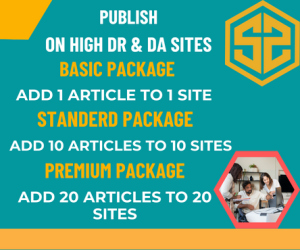In today’s digital landscape, having a website is crucial for businesses, bloggers, and individuals alike. WordPress, being one of the most popular content management systems, powers over 40% of websites on the internet. However, having a WordPress website is not a one-time task; it requires regular maintenance to ensure it remains secure, fast, and functional. In this article, we will explore the importance of wordpress website maintenance and why it should be a top priority.
Why WordPress Website Maintenance is Crucial
- Security: WordPress websites are a popular target for hackers and malware. Regular maintenance ensures that your website is updated with the latest security patches, preventing potential attacks.
- Performance: A slow website can lead to a high bounce rate, negatively impacting your search engine rankings and user experience. Maintenance tasks like caching, optimizing images, and minifying code can significantly improve your website’s speed.
- Functionality: WordPress plugins and themes can become outdated, causing compatibility issues and breaking your website’s functionality. Regular updates ensure that your website remains stable and functional.
- Search Engine Optimization (SEO): Search engines like Google favor websites that are regularly updated and maintained. By keeping your website up-to-date, you can improve your search engine rankings and drive more organic traffic.
What are the Key WordPress Website Maintenance Tasks?
- Update WordPress Core, Themes, and Plugins: Regularly update your WordPress core, themes, and plugins to ensure you have the latest security patches and features.
- Backup Your Website: Regular backups ensure that your website can be restored in case of a disaster or hacking incident.
- Monitor Website Performance: Use tools like Google Analytics and Pingdom to monitor your website’s performance and identify areas for improvement.
- Optimize Images and Content: Optimize your images and content to reduce file sizes and improve page load times.
- Scan for Malware and Viruses: Regularly scan your website for malware and viruses to prevent hacking incidents.
Best Practices for WordPress Website Maintenance
- Create a Maintenance Schedule: Create a regular maintenance schedule to ensure that your website is updated and maintained regularly.
- Use a Maintenance Plugin: Use a maintenance plugin like WP Maintenance Mode or WP Rocket to simplify maintenance tasks and improve website performance.
- Monitor Website Uptime: Monitor your website’s uptime to identify potential issues and prevent downtime.
- Keep a Record of Changes: Keep a record of changes made to your website to track updates and identify potential issues.
In conclusion, WordPress website maintenance is crucial for ensuring the security, performance, and functionality of your website. By prioritizing maintenance tasks and following best practices, you can improve your website’s overall health and drive more traffic and engagement. Remember, a well-maintained website is a key component of a successful online presence.
